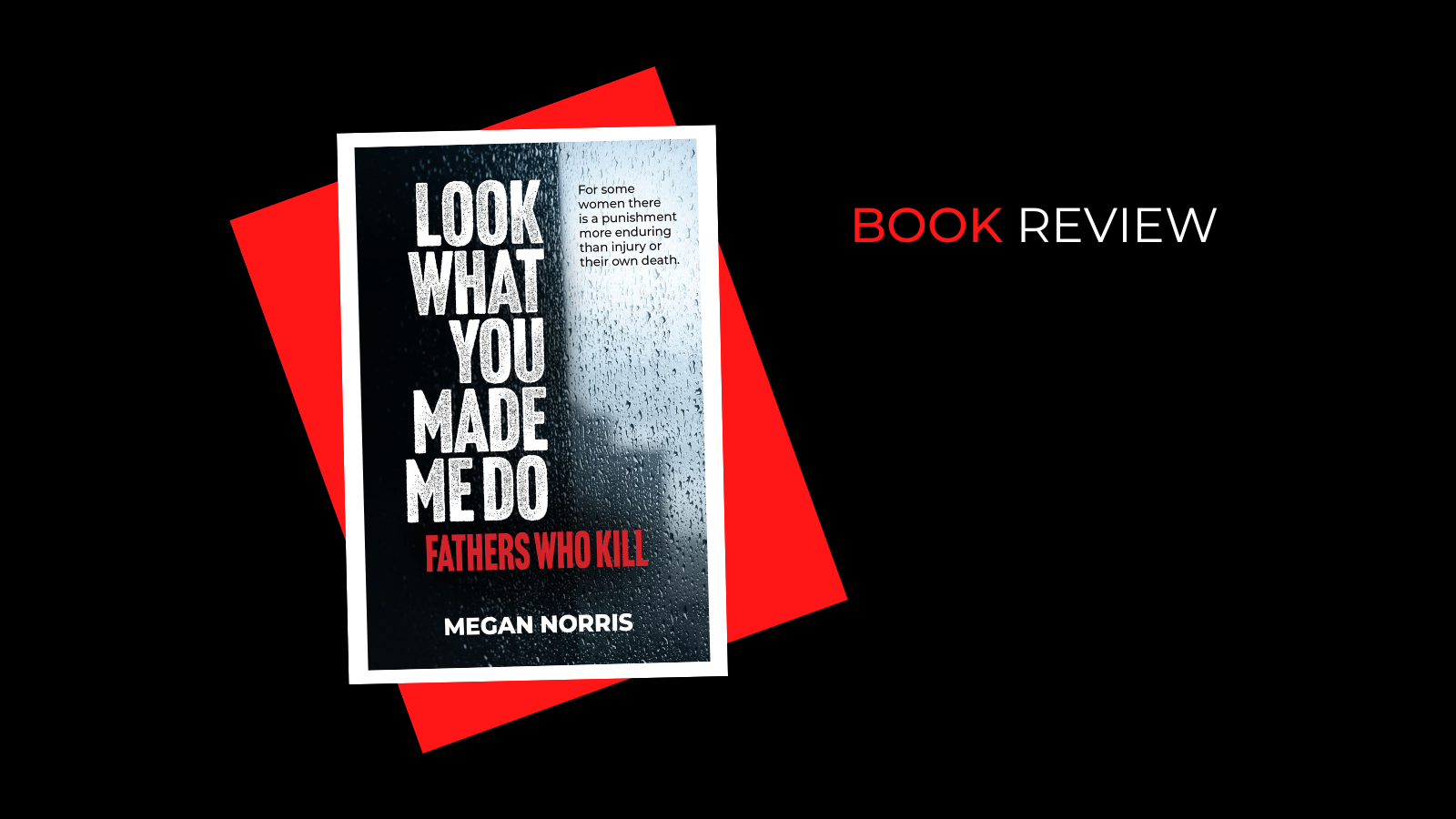by Megan Norris
Publisher: Big Sky Publishing, 2023
Publisher’s blurb
One Australian woman is hospitalised every three hours and two more lose their lives each week as a result of family violence. But for some women, there is a punishment far more enduring than injury or their own death.
Look What You Made Me Do, is a timely exploration of the evil inflicted by vengeful fathers who have killed their own flesh and blood simply to punish partners for ending unrewarding – often abusive – relationships.
Focussing on ten different, but equally harrowing cases of ‘spousal revenge’ dating back thirty years, award winning author Megan Norris, draws upon her own experience as a former court and crime reporter, to examine the horrific murders of eighteen children who were the collateral damage in crimes where the real target of their angry dad’s rage was their mother.
From the 2018 cold-blooded shooting murders of Sydney teenagers, Jack and Jennifer Edwards, whose abusive businessman father was granted a licence to kill by the NSW Firearms Registry, despite a shocking history of family violence dating back three decades, to the heinous premeditated homicides of Queensland mum, Hannah Clarke, who succumbed to her own horrific injuries after watching her three young children burn to death at the hands of their violent father, this book shows it is not only women who are at risk when family violence turns deadly.
Now recognised as the ultimate act of domestic violence a man could inflict on his partner, Norris’s award-winning book shines a light on the disturbing connection between family violence and retaliatory homicide and explores the shattering legacy of grief that such crimes have on surviving mothers.
A book that allows these serious crimes to be better understood and ultimately informs and advocates for new approaches to managing these complex and deadly situations.
Review
by Rachel Spencer
This was a very difficult book to read. Norris presents nine Australian True Crime stories of children murdered by their fathers. Norris admits in her Foreword that it was ‘painful to process and write’ the stories that comprise this compendium of horror, but she explains that all the surviving grieving mothers ‘agreed that these tragedies, as confronting as they are, are too important not to be told.’ These are stories about family violence that in each case has escalated into the ultimate betrayal of trust: the murder of children by the person who was supposed to care for them. Norris argues that ‘these perpetrators knew exactly what they were doing. They knew it was wrong, and they did it anyway.’
Norris, like most True Crime writers, is a journalist who uses fictional techniques such as dialogue and dramatic scenes rather than mere historical summaries to divulge the details of these stories, effectively developing the characters so we are reminded that these are real people. I became angrier and angrier as I read this book about women who are not listened to, about men whose sheer arrogance is manifested in controlling, coercive and violent behaviour, and about children who die in appalling, frightening and unutterably painful circumstances. The overarching theme that connects these stories is the concept that each father is attempting to ‘punish’ the mother. This punitive and retributive element of their behaviour highlights a common characteristic of each of the perpetrators: they are all arrogant, egotistical, self-important, nasty men.
One father throws a little girl to her death over a bridge on the way to her first day at school. Two children cower under a desk, hiding from their father, who shoots them. Three children and their mother are set alight in their car. Three more children are driven into a dam. One child is drugged, then gassed in her dad’s car. These are shocking, awful tales, but Norris narrates them with a dignity and gentleness that helps to balance the horror of the subject matter.
There are a few missed opportunities in this book where some updates in Family Law terminology could have been explained. For example, the terms ‘custody’ and ‘access’ have been recognised in the Australian legal system as property terms which are not appropriate when speaking about parenting arrangements and spending time with children. Children are not our property. Parents do not have ‘rights’ to be with their children.
To use a child as a means of exerting further control over their mother and as a vehicle through which to ‘punish’ a woman for leaving a relationship is unspeakably heinous. The title of Look What You Made Me Do is what one of the perpetrators said, in a vapid attempt to justify his criminal behaviour. Norris explains that ‘the aim of revenge crimes is to inflict a lifetime of suffering…to punish [women] into living with the guilt forever’. However, to perpetuate the idea that these offenders commit murder as an act of ‘punishment’ is extremely problematic, as is the repetition of the notion that the surviving mothers feel ‘guilty’. Labelling these murders as ‘payback’, or ‘punishment’, suggests a reduction in the agency of these murderers, each of whom made a unilateral decision to kill. The choices of men to commit murder cannot be exculpated by reference to a woman’s choice to leave a violent relationship. I would have preferred Norris to place more emphasis on the complete lack of culpability of the victims of these crimes by stressing that any feelings of ‘guilt’ (she refers to this quite often) are misplaced in commentary about the emotional turmoil of the victims left behind.
It is saddening and maddening that this second edition of Look What You Made Me Do was necessary. Norris reminds us that the statistics about women and children fleeing from violent relationships continue to climb. And that women and children continue to die at the hands of embittered fathers.
It’s a hard read. But it’s a must read.
